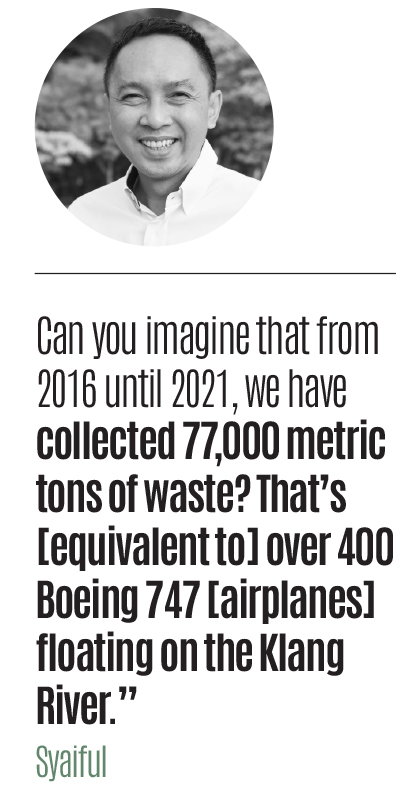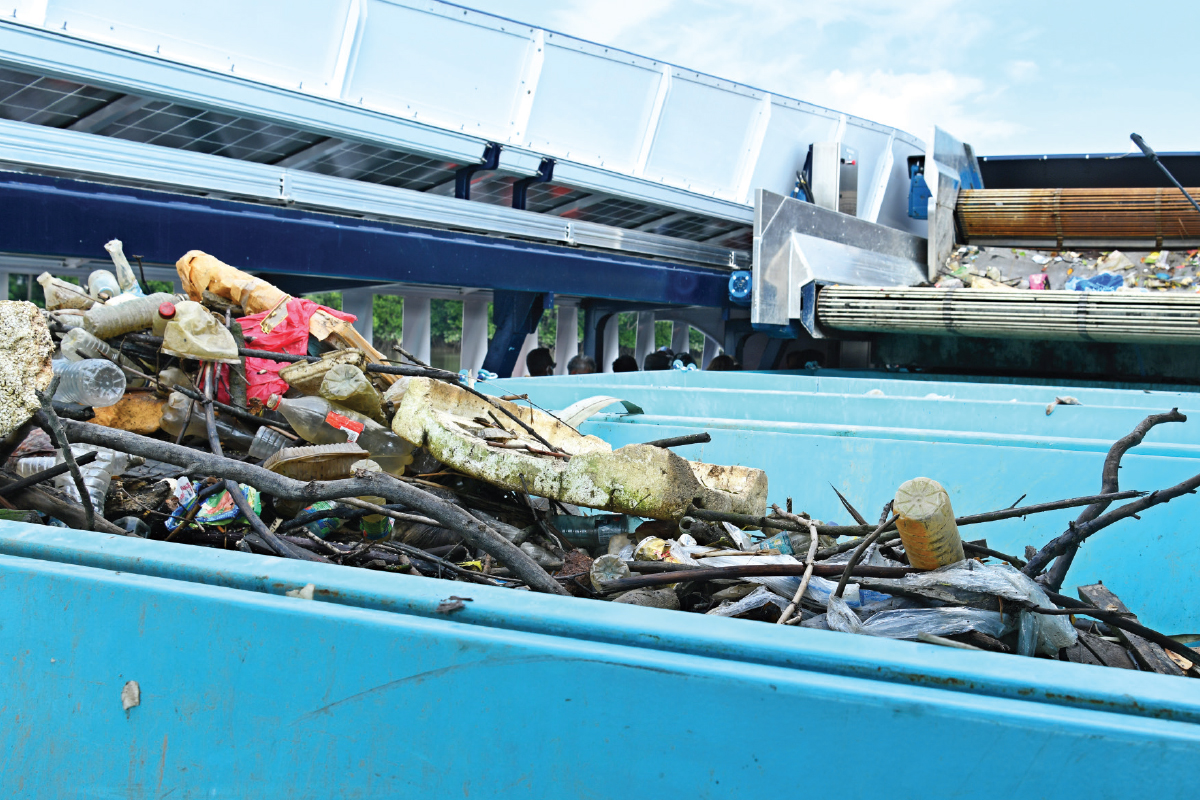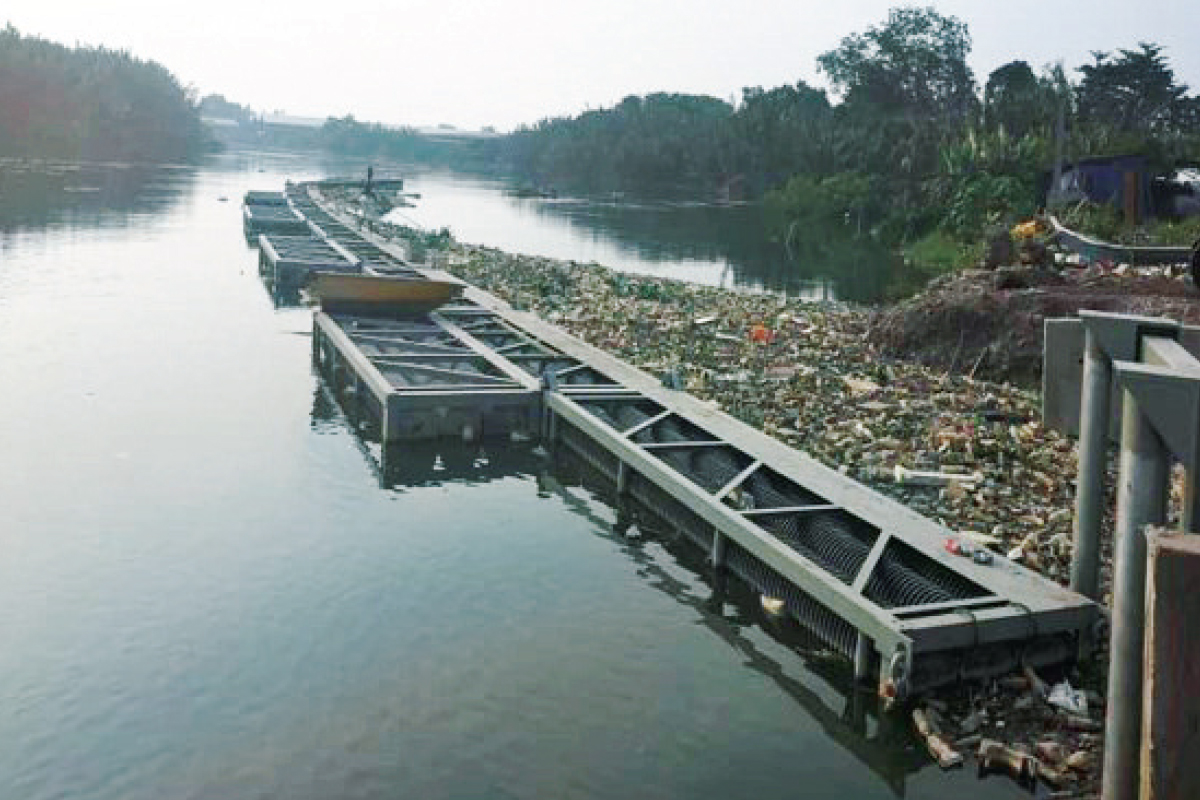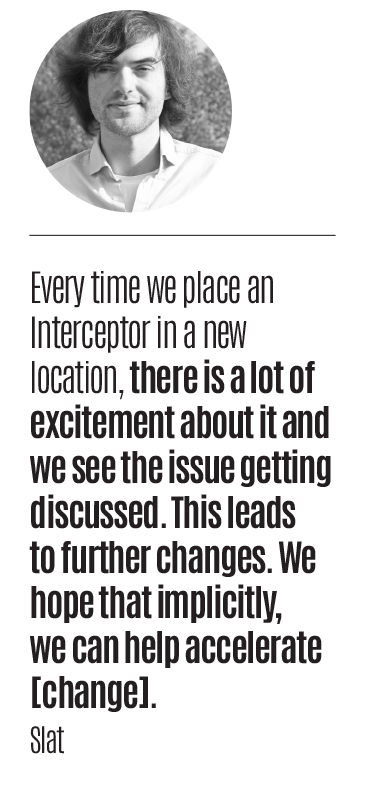
This article first appeared in The Edge Malaysia Weekly on May 16, 2022 - May 22, 2022
Syaiful Azmen Nordin, managing director of Landasan Lumayan Sdn Bhd (LLSB), realised he had a big task ahead of him when he visited the Klang River in 2015.
LLSB, a subsidiary of Menteri Besar Selangor Inc, was mandated by the state government to rejuvenate the river. The project is known as the Selangor Maritime Gateway (SMG).
Littered with waste, the Klang River was identified by Dutch non-profit The Ocean Cleanup (TOC) as one of the 50 most polluted rivers in the world. Plastic bottles, packaging and containers floated on its surface or were trapped in the roots of the mangrove trees by the riverbank.
“Back in 2015, we had a problem with sampah (trash). I went to the chief minister at the time and said, ‘We can talk about economic development and all that, but we have to settle this plastic garbage issue first’,” says Syaiful.
Over the years, LLSB has installed seven log booms — barriers to intercept trash from tributary rivers before it flows into the Klang River — and hired contractors to clear floating garbage in the river frequently.
LLSB also partnered with TOC to install two Interceptors on the Klang River in 2019 and 2020. These solar-powered machines float on the river and trap solid waste before it flows into the ocean.
But LLSB cannot be taking trash out of the river forever, Syaiful acknowledges. “Can you imagine that from 2016 until 2021, we collected 77,000 metric tons of waste? That’s [equivalent to] over 400 Boeing 747 [airplanes] floating on the Klang River. Yet, with all our massive cleaning operations, we have only managed to reduce the amount of waste collected by 38% [in 2021 compared with 2016].”
That is why going forward, LLSB will be working more closely with communities and businesses to raise awareness and prevent plastic from entering rivers in the first place. It will also collaborate with other agencies to implement regulations such as the zero-discharge policy, which aims to deter businesses from discharging effluents into drains and rivers.
Businesses have a role to play in this because their discharge, even if treated, can affect the water quality of the river, observes Syaiful. He has brought CEOs of companies to the river to see how their products are part of the problem.
“Our main mandate is to unlock the economic potential [of the river]. We can’t just be doing river cleaning forever. That’s why other than focusing on our [cleaning] operations, we are enhancing our collaboration with Dutch Lady Milk Industries Bhd to tackle Sungai Penchala, one of the main tributaries of the Klang River [through river cleaning efforts], and with Nestlé (M) Bhd for waste recovery. They are paying local communities to extract plastic bottles from the log booms to be recycled. We need more such collaborations,” he says.
LLSB is working with Lembaga Urus Air Selangor (LUAS) to introduce the zero-discharge policy by the third quarter of 2022, with the aim of improving the water quality of the Klang River. LLSB wants to achieve Class III (moderately good, extensive treatment required) or higher levels of water quality in the river for 70% of days in a year. Currently, the record stands at 48% of days in a year, according to LLSB.
Under the policy, industries, factories and institutions that discharge water into the river are expected to pay a fee to the authorities. This is meant to encourage them to invest in water recycling facilities.
“We are not penalising businesses. Why are businesses discharging treated water when they could recycle it? Then, they don’t need to take in that much water and it becomes a circular economy solution,” says Syaiful.
“Industries now use drinking water quality solutions for their industrial processes. That’s a waste. They should be using recycled water for their air conditioning and washing, for instance. This is an opportunity for them to put new systems in place and become more ESG (environmental, social and governance) compliant.”
Other partners that LLSB is working with include Friends of Rivers in 56 registered initiatives, where local communities come together to beautify riverbanks, and the Say No to Plastic movement.
Why it is so important to take care of the Klang River
At least 80 tributary rivers feed into the Klang River, which cuts across several major cities and ends up in the country’s major ports. Despite its economic importance, developments on the riverbank do not take advantage of the river.
“If you look at countries like Singapore, river developments are always prime in terms of their pricing and attractiveness. But that’s not the case here,” says Syaiful.
By 2025, the cleanliness of the Klang River will become more essential when the Rasau Water Treatment Plant goes online. The plant will use water from the Klang River and eventually, provide 1,400 million litres of water per day to Klang Valley residents.
Meanwhile, years of trash and effluents accumulating in the river have made the riverbed shallower, Syaiful observes. As a result, bouts of heavy rain can cause the river to overflow. The major flood last December was a clear example.
In the next few years, LLSB will be dredging the river as a flood mitigation action. “During the recent floods, the Petaling and Klang districts — which the river crosses — lost RM2.3 billion in two days. It created a lot of problems for people who live along the river. So, this is one of our main goals for the SMG project,” says Syaiful.
Save by subscribing to us for your print and/or digital copy.
P/S: The Edge is also available on Apple's App Store and Android's Google Play.






